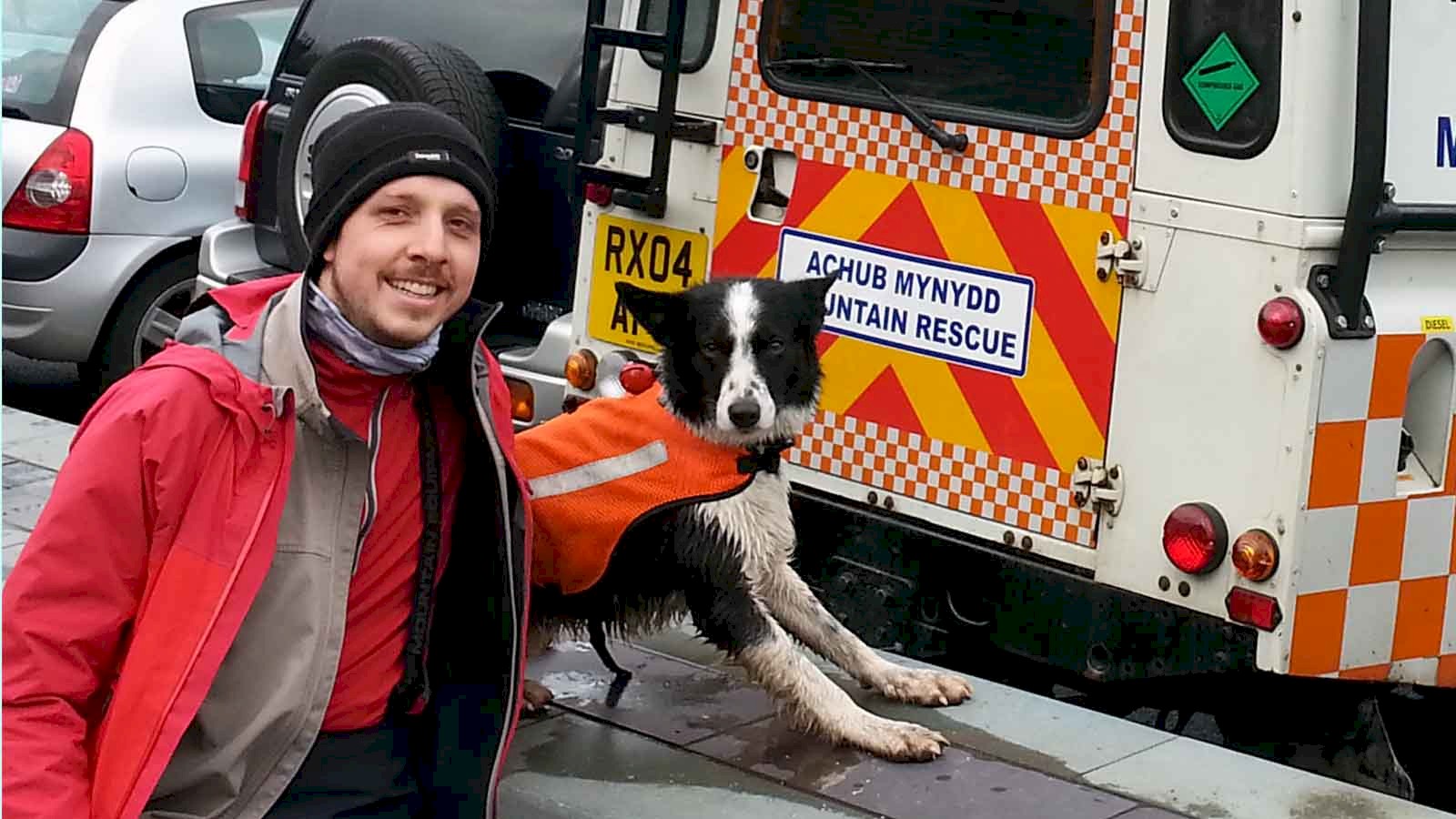While visiting a Mountain Rescue team earlier last month I was asked whether I'd like to be a dogs body for the afternoon. Actually the conversation went more like this - "You have waterproofs with you don't you?" "In the car yes." "Good, you're our body for the afternoon then.". As a result, Ben (the dog), his handler and a few members of the team headed out with me into an area with just the right amount of cover to hide, but not too strenuous or difficult. Ben, a young border collie, is still in his early stages of search dog training and therefore is still working in small areas with a lot of control on the part of his handler.
As I stood watching the dog carry out his first search for one of the team members one of the old hands on the group, a search dog trainer and experienced handler, explained the process of training a search dog. While it is obvious to most that dogs are trained by turning anything they need to do into a game with a reward, it is fascinating to see a dog being trained in such way. Generally, I was told, there are three types of search dogs. Tracking dogs will follow ground disturbances left behind by the tracked individual (or animal for that matter) and typically operate with their noses glued to the ground. Trailing dogs will trail any subject, but require the scent to be known. Whereas an air scenting dog, the type predominantly used by UK Search and Rescue dog teams will search a given area for any human scent that has traveled through air. In order to achieve this the handler needs to be able to position the dog correctly downwind of a potential subject before the dog will search, usually off-lead. This method of searching is able to cover vast distances and dogs are capable of scenting a subject from up to 1/4 miles away. As a result this method of searching is not very effective in dense urban areas since the dog cannot tell whether they have found the correct person.
Once the dog has found a scent source (read: potential casualty) they will indicate in a variety of ways to the handler that they have found something. In Ben's case he is being trained to return to his handler, sit and then speak before shuttling back and forth between casualty and handler until both are united. It is this action of barking before returning to the casualty Ben was being trained in during my time with the team. Initially Ben would return to his handler and sit - this part of the training had already been successful - with the handler giving the command "Speak" to get Ben into the habit of barking. Eventually the handler will no longer give the command and Ben will hopefully figure out for himself that until then he had spoken to get a reaction - leading him to speak on return.
All through the training Ben's handler and the team were constantly discussing tactics and the dog's behaviour as well as trying to spot any potential issues for the future. However, for Ben this was all just a fun day out. Once the jacket - his signal that he is now "working" - was off he was a young dog like any other. Playing fetch with himself, a small stick and a small stream or chasing grass in the wind he appeared to be blissfully unaware of just how important he will one day be. Once the jacket was on him though he completely changed in character. The playful and carefree puppy spirit gave way to a focused dog, concentrating on his handler and trying his best not to become distracted. It is easy to forget that search dog training is as much training the handler as it is training the dog. While the dog is doing the leg and nose work, the handler has to constantly evaluate the situation, keep his dog and himself safe, adjust the search pattern in reaction to the dog, communicate with other search parties and keep up with a nimble four-legged all-terrain power-machine. For Ben the reward of a find at present is his squeaky ball with which he plays extensively after each find. Previously he played a tug of war game with the bodies to create a strong bond between body and reward.
Considering the amount of training required to progress a dog and handler from puppy stages to becoming a fully graded search dog team I couldn't help but ask the team whether the dogs are still "worth it" in this modern age of technology. Thanks to mobile phones and GPS the number of true mountain searches by Mountain Rescue teams is ever decreasing. However, as was pointed out by the team the dogs are still extremely valuable assets in full blown as well as partial searches. Where a large human search party would take hours to search a moderate boulder field for a casualty, one dog and handler can accomplish this in a fraction of the time. Since Mountain Rescue and Lowland Rescue in the UK is manned by volunteers it's no wonder that the team like to use any asset they can get their hands on that reduces the time spent searching. Especially since despite the availability of technology there is no guarantee for good signal or indeed accurate information being passed to the rescuers.
One argument that has come up at times is the relatively low "find rate" of SARDA (Search and Rescue Dog Association) Dog teams. In 2015 a mere 3 people out of 50 callouts to 60 missing people by SARDA (England) were found by the dogs. However, the worth of the dog teams goes beyond the actual find. A Dog team can equally clear an area and ensure nobody is in the tricky or otherwise difficult to search terrain. This in turn allows the human search teams to be more effective. As an example a dog may search along the most probable route and not indicate, leading to the human team to head up a different route and come across the casualty. While this would not be a dog find by its definition, the dog still played a valuable role in the overall search.
If you want to know more about search dogs the National Search and Rescue Dog Association (NSARDA) website is an excellent resource. Particularly if you would like to be a Dogsbody and help out the association by being the casualty the dogs find during training and assessments, then please get in touch with them. Many dogs are trained using the already stretched volunteers of the rescue teams, so if you can help them out by being that body to find you would not only be making a massive difference to the dogs but also the teams. You would be enabling somebody to spend a bit more time with their families and loved ones, friends, hobbies or indeed all the other things they give up regularly for the sake of keeping us safe out there.
I wish Ben and his handler the best of luck and success in obtaining their search dog grading and hopefully they will one day make that find they are working so hard towards.


Leave a comment